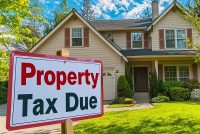How Are Texas Property Tax Rates Determined?

Here’s what you need to know about Texas property tax rates and how they’re determined:
- Local jurisdictions like cities, counties, and schools set tax rates (sometimes referred to as mill rates) to determine your property tax bill based on your property’s appraised value.
- They use the estimated taxable value of all properties to set budgets and tax rates each year. The tax rate is calculated by dividing budget needs by the total appraised value.
- The certification date for property values is July 25th. Ideally, all property tax protests and adjustments are finalized first, as too many changes after this can leave a budget surplus or deficit. Note that a percentage of appraisal protests can still occur after July 25th.
- Local governments sometimes hold public hearings for taxpayers to provide input before they set tax rates by September 30th.
- You can attend budget hearings, vote in elections, apply for exemptions, and protest your property tax appraisal to manage your tax bill. Gill, Denson & Company can help you fight for a fair property value and potentially lower your taxes.
Where Do Texas Property Tax Rates Come From?
We often talk about how your property tax bill is calculated, but where do Texas property tax rates come from? These rates, expressed as mill rates, are a crucial factor in determining your annual bill amount. They’re set by local jurisdictions, including (but not limited to) cities, counties, and schools, and essentially translate your property’s appraised value into tax dollars owed. You can find the mill rates for your local tax entities on their websites.
How Are Mill Rates Set?
Each year by April 30th, the chief appraiser certifies the estimated taxable value of all properties in the district. Local governments use this to help set their budgets and tax rates for the year. To arrive at the mill rate (i.e. the property tax rate), they divide their budget needs by the total appraised value (known as the appraisal roll), then multiply by 1,000.
The Certification Date & Its Significance
The county tax assessor gets the appraisal roll from the appraiser’s office on the certification date, typically July 25th. This is when they can calculate the mill rate and determine if there will be enough funds to cover the overall budget. Counties try to have all property tax protests and adjustments handled before the certification date. Too many changes after that date can cause complications, leaving the tax assessor’s office with either a surplus or a deficit.
Government entities must vote on and adopt a tax rate for the current year before September 30th. They may hold public hearings in August or September for taxpayers to provide input first.
Calculate Your Property Taxes with the Mill Rate
To simplify this concept, think of a mill rate as a percentage: 1 mill equals $1 in taxes per $1,000 of taxable value. A mill rate of 10 would mean $10 owed for every $1,000, and so on. To calculate your total property tax bill, simply add up the mill rates from each applicable entity to find your total mill rate. Then use the following formula:
( Your Assessed Taxable Value X Total Mill Rate ) / 1,000 = Your Property Taxes
The Benefit of the Tax Rate Cap
Budgetary needs and property valuations can fluctuate each year, impacting how entities set tax rates. Thankfully, there are laws limiting year-over-year budget growth. For example, a local school district can’t double its budget overnight because that would double the taxes in that county. The cap law sets a year-over-year threshold of 3.5% for cities and counties and 8% for special taxing units. Anything beyond that requires voter approval in the next election (typically November).
How Can You Take Action?
Even small fluctuations in Texas property tax rates can significantly impact your annual property tax bill. As a homeowner, this can affect your budget, while for businesses, it can impact your cash flow and competitiveness. So, what can you do about it? Use your voice and exercise your rights by attending budget hearings, voting in local elections, and applying for applicable property tax exemptions.
Even with lower tax rates, property appraisals aren’t infallible and could be overvalued, leading to higher taxes than you owe. At Gill, Denson & Company, our property tax consultants can review your appraisal, identify potential errors, and help you fight for a fair value. With years of experience and a proven record of success in negotiating lower property values, we can help you achieve significant tax savings, even when rates rise.
The expert property tax consultants at Gill, Denson & Company are ready to assist you with your property tax protest! Get started with our residential or commercial services today to ensure you only pay your fair share of property taxes.









